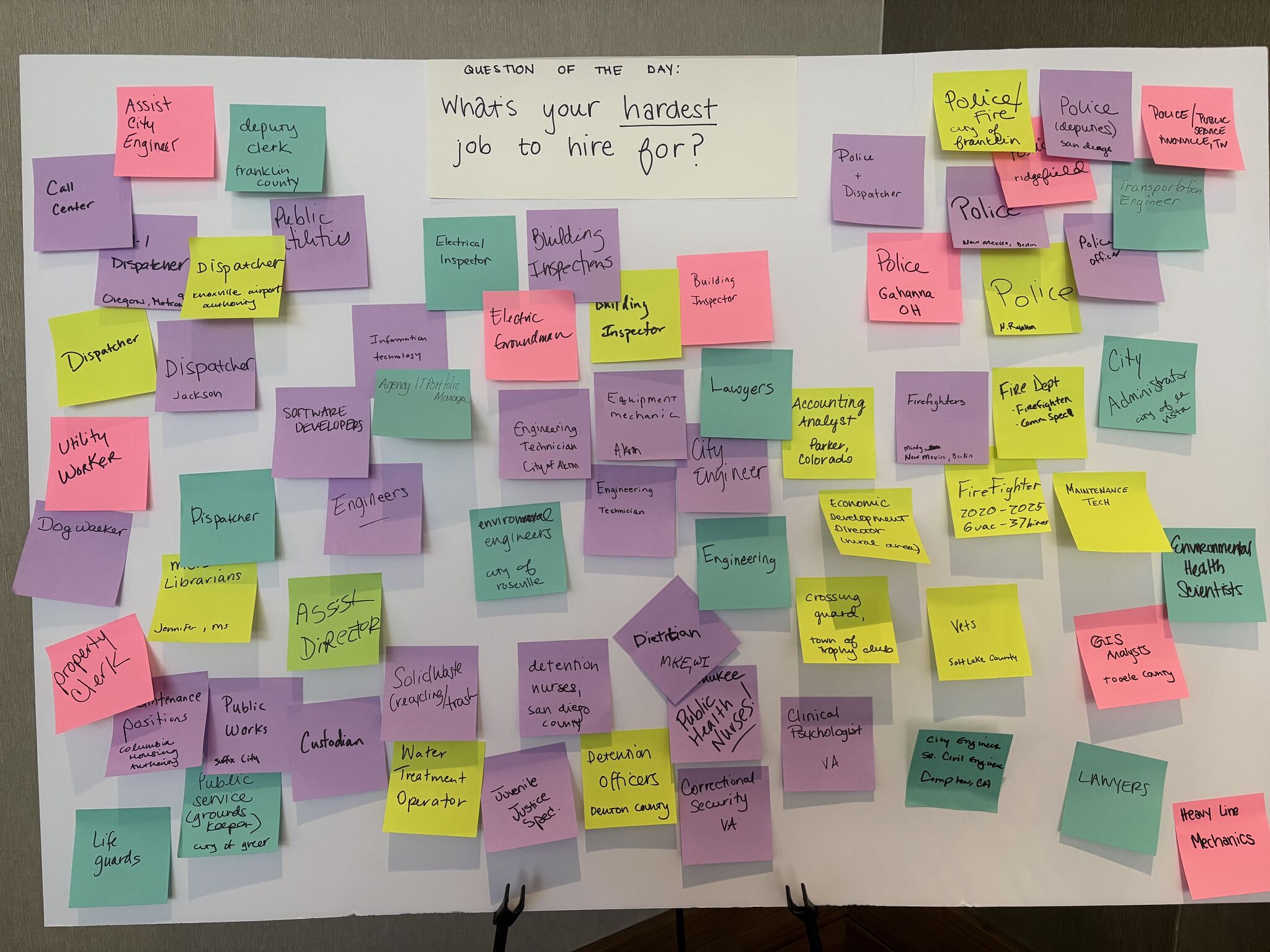What Sticky Notes Taught Us About Government Hiring at PSHRA

A few months back, our team set up at the Public Sector HR Association (PSHRA) conference with a simple experiment.
No flashy demo. No perfect pitch. Just a whiteboard, sticky notes, and one question: What's your hardest job to fill?
The answers revealed patterns we haven't stopped thinking about since.
"Hardest" means different things to different people
Right away, we noticed people interpreted "hardest" in completely different ways.
For some, it meant jobs with constant turnover. One fire department leader shared that he's made 37 hires since 2020 for just six positions. That's over 200% turnover.
For others, it meant roles that never get a single applicant. Milwaukee's Health Department has had a dietitian position posted all year with zero applications. The role involves working with WIC mothers and children but requires specific certifications that are tough to find.
What struck our team most? How vast the challenge is. Government HR teams of two or three people are hiring for everything from IT administrators to maintenance workers to nurses to police officers. There are so many important jobs in government that most people never even hear about.
The government hiring patterns that emerged
Even though opinions differed on which jobs are hardest, the challenges faced across the public sector are not that unique:
🔹 Burnout in demanding roles. Detention officers, dispatchers, police officers - we heard about these repeatedly. The work itself is grueling, and culture and environment matter.
🔹 Credential barriers. Some roles require specific certifications or licenses that shrink the talent pool to nearly nothing (see those Milwaukee dietitians). When those roles go unfilled, the work gets contracted out.
🔹 Competition from within. HR leaders described losing staff to neighboring counties or cities offering slightly better benefits. Someone starts with one agency, then leaves a year later for the one next door.
🔹 Impossible schedules. Some positions require working hours as varied as the job responsibilities themselves, making them hard to fill as standalone jobs. One Texas town hires crossing guards for two hours in the morning and two in the afternoon at $17/hour. No one applies. So HR staff cover the shifts themselves at $45/hour in overtime.
🔹 Specialized roles in small towns. Finding qualified candidates is one thing. Convincing them to relocate to rural communities is another challenge entirely. Attorneys, librarians, economic development coordinators. The talent exists, but relocation is hard.
What this tells us about public sector hiring
These challenges aren't new, but hearing them directly from HR teams across the country reinforced something important. Public sector hiring isn't just hard because of one thing. It's a combination of factors that pile up differently for every agency.
Turnover, credentials, geography, schedules, competition from other government employers. Each agency faces its own unique mix of these obstacles.
The good news? Understanding the patterns is the first step toward addressing them. And sometimes the best way to understand is simply to ask the right question and listen.
That's exactly what we're doing with our design partners at GovSkills. By working directly with HR teams who live these challenges every day, we're creating something that actually works for both the agencies trying to fill critical positions and the applicants looking to serve their communities. Because off-the-shelf solutions built for the private sector just don't cut it when you're trying to hire crossing guards and city engineers with the same small team.
Ready to see it for yourself? Schedule some time now.